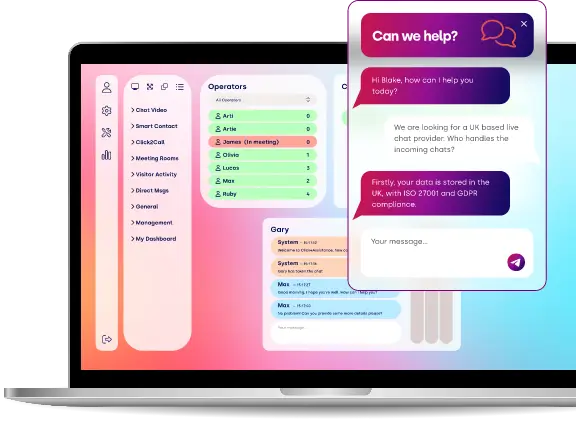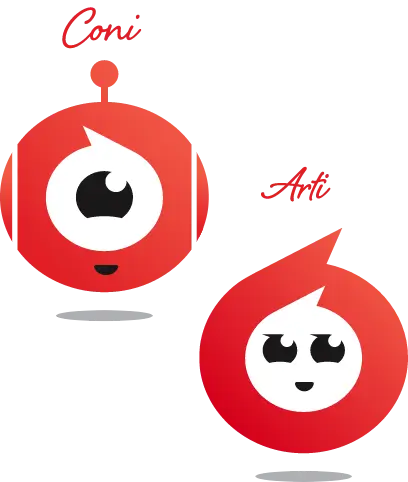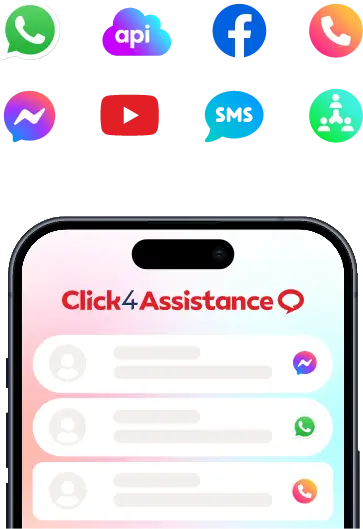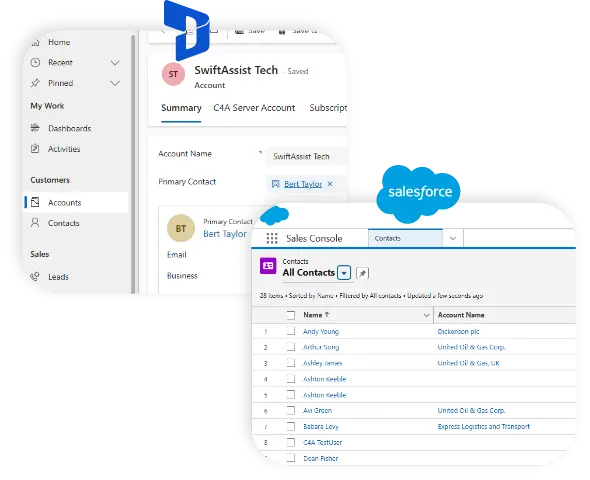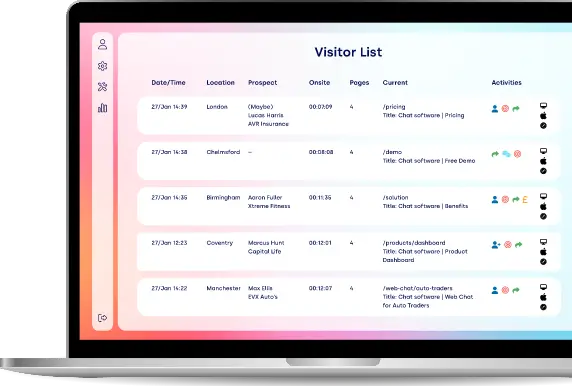Chatbot Integration: A Complete 2025 Guide to Boost Efficiency
Businesses are in a race to deliver faster and smarter customer support. Chatbots play a key role by allowing instant interactions, cutting down on wait times and providing 24/7 service.
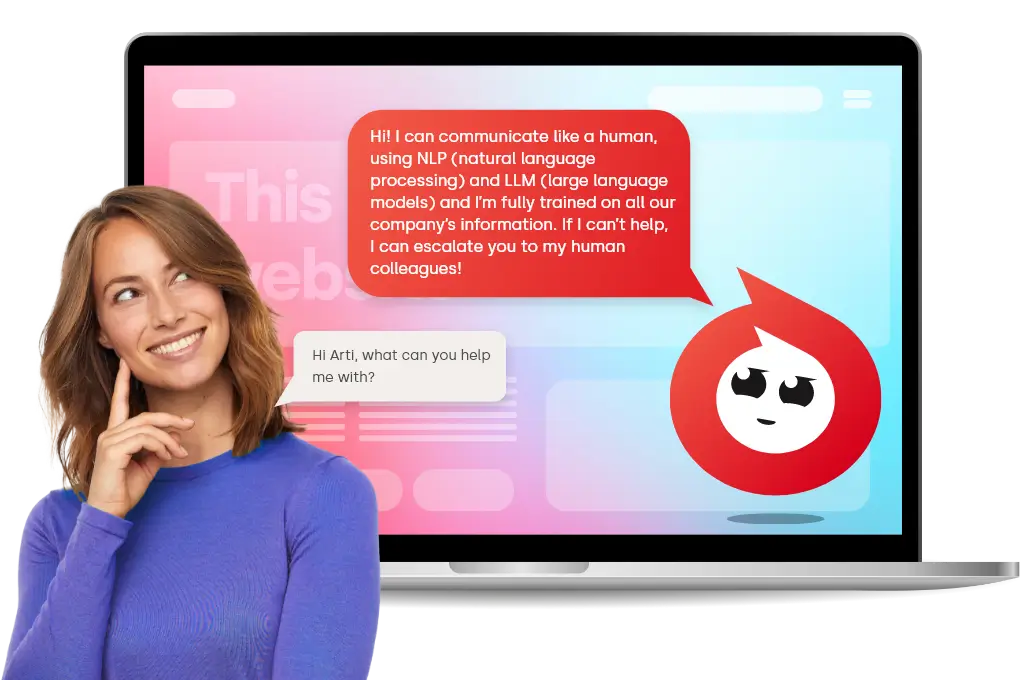
If you're interested in conversational AI for customer service or looking into how to build a chatbot for customer support, this guide will show you how incorporating chatbots into your business can enhance customer interactions and optimise your internal processes.
Have you ever visited a website seeking immediate assistance and – suddenly! – a welcoming chat window popped up, ready to assist you? That’s the magic of chatbot integration. More than just a trendy feature, these AI-powered assistants are becoming essential tools for contemporary businesses. They’re transforming customer service by delivering tailored support, boosting efficiency and collecting insights you didn’t even realise you needed.
But what does “chatbot integration” truly entail? It’s not merely about placing a robot on your website and crossing your fingers. Integration means making that chatbot an integral part of your ecosystem – your website, your applications, your CRM, and even your internal team tools – so it can genuinely serve you rather than being just another neglected widget.
In this comprehensive guide, we’ll dissect what chatbot integration means, why it’s important, how to implement it effectively, and where it’s headed in the future. From actionable steps to real-life success stories, you’ll discover precisely how to transform a basic chatbot into a powerhouse for customer engagement and business expansion.
Understanding Chatbot Integration
At its core, chatbot integration refers to the incorporation of an intelligent virtual assistant into your current business frameworks – whether that’s your website, mobile application, helpdesk software, CRM, or even your internal tools. However, it goes beyond merely placing a chat window on a webpage. Effective integration ensures that the chatbot becomes an integral component of your entire operation.
When a chatbot is seamlessly integrated, it doesn’t just engage in random conversations – it taps into real data, executes tasks on your behalf, and updates your systems automatically. For example, a retail chatbot can retrieve live product availability from your inventory database, process orders through your checkout system, and send confirmations to your CRM – all without any human involvement. The chatbot evolves from being a mere gimmick to a dependable team member who never takes a day off.
Why Does It Matter?
So, why should you prioritise integration over simply adding a generic chatbot widget to your website? Because today’s customers demand seamless interactions. They expect a bot that not only comprehends their enquiries but also takes meaningful action with that information. If a customer enquires about their last order, they anticipate an accurate, real-time response – not just a “please contact support” reply.
Integration also guarantees that your chatbot aligns with your actual business objectives. Rather than functioning as a disjointed FAQ, it transforms into a genuine operational asset: generating leads, qualifying prospects, managing support tickets, or even processing transactions. When executed properly, it feels like a member of your team rather than an external tool.
How Does It Work In Practice?
From a technical standpoint, integration involves linking your chatbot platform to other software systems through APIs, webhooks, and occasionally middleware. The chatbot exchanges information in real time, meaning conversations are driven by live data instead of static scripts.
For instance:
- A HR chatbot within Slack might link to employee databases to deliver immediate responses to questions like, “How many days of annual leave do I have remaining?”
- A customer support chatbot on your website could directly interface with your helpdesk, automatically generating tickets when problems require escalation.
When all components work together seamlessly, you end up with a chatbot that appears intelligent and contextually aware, rather than just another automated system providing scripted responses.
Benefits of Chatbot Integration
When businesses consider chatbots, they often envision a small bubble in the corner of a website that responds to basic enquiries. However, when fully integrated, a chatbot offers much more than that. Let’s explore the key benefits and their significance for real businesses – not just theoretically, but in practical, everyday scenarios.
- Faster, 24/7 Customer Support
Customers dislike waiting, and honestly, who can blame them? If someone has a question about a product at 2 a.m., they don’t want to leave a voicemail and wait until morning. An integrated chatbot acts as your always-available support agent.
Since the bot connects directly to your systems, it can do more than just say “we’ll get back to you.” It can check order status, suggest troubleshooting steps, or even handle simple requests right away. This immediate assistance fosters trust, alleviates frustration, and demonstrates that your business is prepared to help customers whenever they need it - not just during business hours.
- Reduced Workload for Human Teams
Let’s face it: most customer service teams are overwhelmed. They spend a significant amount of time addressing repetitive questions like “What are your hours?” or “How do I reset my password?” When your chatbot is integrated, it can respond to these automatically, allowing real agents to focus on complex issues that truly require human insight
This isn’t merely about saving time - it’s about enhancing job satisfaction. When your team isn’t bogged down by the same five questions hundreds of times a day, they experience less stress and greater engagement. Think of it as empowering your human staff by enabling them to concentrate on higher-value conversations.
- Increased Sales and Conversions
Chatbots are not limited to customer service; they serve as powerful tools for boosting sales. Picture a visitor on your website who is uncertain about which product suits their needs. A well-implemented chatbot can intervene, pose the right questions, and lead them directly to the ideal product. It’s akin to having a personal shopper right on your site.
Moreover, integration allows your bot to access real-time data - such as ongoing promotions or stock levels - enabling it to make suggestions based on what is genuinely available. Some companies even link chatbots to payment systems, permitting customers to make purchases directly within the chat interface. Fewer clicks, reduced obstacles, and increased sales.
- Consistent, Data-Driven Engagements
While human agents strive to provide excellent service, they are still human - they can become fatigued, make errors, and occasionally overlook details. In contrast, a chatbot consistently delivers precise information every time. When integrated, it not only provides answers but also gathers data from every interaction.
This means you’re not left to speculate about the most common customer enquiries; you’re actively monitoring them. You can detect trends, identify issues early on, and leverage that knowledge to enhance both your chatbot and your overall business operations.
- Cost-Effective Scalability
What occurs when your business experiences a sudden surge, resulting in three times the customer enquiries overnight? Recruiting and training new agents requires both time and financial resources. However, an integrated chatbot can manage thousands of conversations at once without any strain or the need for overtime compensation.
This ability to scale makes chatbots ideal for handling seasonal increases, product launches, or viral events that could overwhelm your usual support capabilities. It’s akin to having a customer service department that can expand infinitely, prepared to assist a moment’s notice.
Marc Benioff, Salesforce CEO says “We are already at the point that people can't tell the difference between AI and human agents.” You can read the full article.
Challenges of Chatbot Integration
Integrating a chatbot can be quite challenging. Although the advantages are significant, there are obstacles that can transform an exciting initiative into a frustrating experience if you’re not adequately prepared. Let’s explore the most frequent challenges that businesses encounter – and the reasons behind them.
- Technical Challenges
A well-integrated chatbot must communicate with your website, CRM, ticketing system, and possibly even your internal databases. Each of these platforms has its own unique “language,” and facilitating communication between them can feel like trying to translate between three different dialects without a dictionary.
Without appropriate APIs, middleware, or developer skills, integration can quickly face challenges. For example, an e-commerce chatbot may need to verify live inventory or access customer order history — but if your back-end system isn’t designed for seamless data sharing, progress can come to a standstill.
The key takeaway? You need a comprehensive understanding of your existing tech stack and the right individuals (or platforms) to ensure those connections are smooth.
- Data Privacy and Security Risks
Chatbots frequently manage sensitive data: customer names, account information, and even payment details in some instances. If the integration lacks security, you risk exposing personal information — which can quickly erode customer trust (and draw the attention of regulators).
It’s essential to ensure that the chatbot adheres to data protection regulations like GDPR or CCPA. This involves using encrypted connections, properly managing data retention, and ensuring the bot doesn’t store or reveal information it shouldn’t. Security is not merely an IT concern — it’s a critical business priority.
- Maintaining Conversion Quality
Have you ever encountered a chatbot that provided a completely nonsensical answer? This often occurs when integration is viewed as a one-off task rather than a continuous effort. A chatbot's knowledge base must be updated regularly, particularly if it is linked to live systems. Failing to do so can result in the bot disseminating outdated information or reaching dead ends.
For instance, if your pricing changes and your chatbot isn't updated accordingly, customers may receive incorrect information — which can lead to confusion, frustration, and potentially lost sales. To maintain a chatbot that is both conversational and contextually aware, it is essential to engage in ongoing monitoring, testing, and adjustments.
- Cost and Resource Investment
Although chatbot platforms are now more budget-friendly, achieving genuine integration still demands time and expertise. Companies frequently overlook the effort needed to link various systems, create conversational pathways, and train the bot to address real-life enquiries.
The allure of a quick, ready-made chatbot to cut costs and time is strong, but these options often fail to provide sustainable outcomes. Making an initial investment in thorough integration yields benefits in the long run, but it necessitates careful planning and financial commitment from the outset.
- Balancing Automation and Human Support
A chatbot excels at managing repetitive enquiries, yet it has its limitations. Certain customers still favour – or need – to talk to a human when issues are complex or delicate. The difficulty lies in creating an integration that can seamlessly transfer the conversation when necessary.
If this is mishandled, customers may find themselves stuck in a never-ending chatbot cycle, frantically typing “agent” or “representative”. An effectively integrated chatbot features escalation routes to human teams, ensuring that users don’t have to begin the process all over again.
Step-By-Step Guide for Successful Chatbot Integration
- Define Business Objectives and Use Cases
Before proceeding, consider: What do you want the chatbot to accomplish? Is it aimed at customer support, lead generation, sales, or internal processes? Clearly identifying the purpose will shape your integration approach. For example, a retail chatbot may prioritise product suggestions and order tracking, while an HR bot could focus on onboarding and addressing employee FAQs.
- Select the Appropriate Chatbot Platform
Not all chatbots are the same. Some are basic rule-based bots that adhere to scripts, while others are powered by AI and can learn from interactions. Evaluate your business requirements, scalability, and integration options when selecting a platform. Well-known choices include Dialogflow, Microsoft Bot Framework, and solutions based on the ChatGPT API.
- Create Conversation Flows
The success of a chatbot relies on its conversational design. You must outline user journeys and potential enquiries. Will your bot adhere to a scripted dialogue, or will it respond dynamically based on AI comprehension? Personalisation is crucial. The more context-aware and flexible your bot is, the more satisfying the user experience will be. Think of it as choreographing a dance—every movement counts.
- Connect with Existing Systems
Next, link your chatbot to CRM, ERP, or other pertinent platforms. This allows it to access customer information, update records, or automate workflows smoothly. Effective API integration is vital; otherwise, your bot may provide outdated or inaccurate information, which can quickly undermine trust.
Case Studies and Real-World Examples
Observing theory in practice simplifies the understanding of the benefits of chatbot integration. Let’s delve into how various sectors utilise bots.
- E-commerce Integration
Online retailers frequently implement chatbots to create personalised shopping experiences. Picture yourself browsing an online store: a bot recommends products tailored to your browsing history, aids in managing your cart, and even processes returns. This approach not only increases sales but also fosters customer loyalty.
- Healthcare Integration
Healthcare providers utilise chatbots for scheduling appointments, sending patient reminders, and offering telehealth support. For instance, a bot can respond to common health enquiries, assist patients with symptom checkers, or help manage prescriptions—saving valuable time and resources.
- Banking and Finance Integration
Banks use chatbots for various functions such as balance enquiries, fraud notifications, and loan applications. A user can access account details or receive credit advice without needing to talk to an agent, allowing the bank to cut operational costs while enhancing customer interaction.
- Enterprise/Internal Tool Integration
Organisations incorporate chatbots into their internal systems to assist employees. HR bots can provide answers to onboarding queries, IT bots can resolve technical issues, and communication bots can organise meetings or oversee workflow updates. This enhances productivity and alleviates the cognitive burden on staff.
“Conversational AI is one of the key components of automation, providing customers with a conversational interface into self-service and moving organisations gradually away from asking the customer to do all the work.” - Deloitte
Powering Customer Engagement Across All Industries
From healthcare to finance, retail to education, our chat platform is designed to meet the unique needs of your UK business. It boosts customer engagement across all industries with customised solutions.
Future Trends in Chatbot Integration
The chatbot landscape is changing swiftly. To stay ahead, it’s crucial to grasp the new trends emerging in this field.
- AI Advancements
Artificial intelligence is enhancing chatbots, improving their natural language comprehension and sentiment detection capabilities. Future bots will not only reply but also foresee user needs and interpret emotions, creating interactions that feel truly human.
- Omnichannel Experiences
The expectation for seamless integration across various platforms is becoming the norm. Users want a cohesive experience whether they are engaging through a website, mobile application, or social media. This omnichannel strategy guarantees that a conversation initiated on Instagram can effortlessly transition to your website.
- Hyper-Personalisation
Upcoming chatbots will utilise data to deliver highly personalised experiences. They will recall previous interactions, proactively suggest products, and provide recommendations that align with individual preferences. Picture a bot that remembers your go-to coffee order before you even mention it.
- Voice and Multimodal Interfaces
Chatbots are evolving past just text-based communication. The integration of voice, along with visual or interactive interfaces, will enable users to interact through various modes. Envision assistants like Alexa paired with a dynamic mobile or web interface for optimal versatility.
Frequently Asked Questions (FAQs)
- What’s the difference between a chatbot and live chat?
Live chat features individuals providing responses, whereas a chatbot is an automated tool created to manage enquiries without the need for human intervention. Numerous businesses integrate both methods – utilising bots for straightforward questions and live agents for the more intricate problems.
- Do I need coding skills to integrate a chatbot?
Not always the case. Numerous chatbot platforms come equipped with drag-and-drop builders and ready-made integrations, allowing for straightforward setup without extensive technical expertise. Nevertheless, custom integrations or more complex features might necessitate assistance from a developer.
- Can chatbots really understand natural conversations?
Contemporary chatbots driven by AI leverage natural language processing (NLP) to grasp intent, context, and even emotional tone. Although they aren't flawless, their capacity to comprehend user meaning has seen significant enhancement.
- How do I measure the success of my chatbot integration?
Monitor key metrics such as response time, resolution rate, user satisfaction, engagement levels, and conversion rates. These indicators reveal if your chatbot is achieving business objectives and highlight areas for enhancement.
Conclusion
Integrating chatbots is not merely a fleeting trend—it represents a strategic initiative that can revolutionise the way businesses engage with their customers and enhance operational efficiency. From addressing basic enquiries to suggesting products and automating internal processes, chatbots offer speed, convenience, and effectiveness.
Nevertheless, achieving success requires intentionality. It’s essential to establish clear objectives, select the appropriate platform, create well-structured conversation flows, and engage in ongoing optimisation. When executed correctly, chatbot integration evolves into more than just a digital assistant—it becomes a reliable extension of your business.
As technology progresses, chatbots will become increasingly intelligent, personalised, and human-like. Companies that adopt this transformation now will be better prepared to fulfil customer expectations in the future. Therefore, if you’ve been considering the addition of a chatbot to your website, application, or internal system—there’s no better time than now to take the plunge.
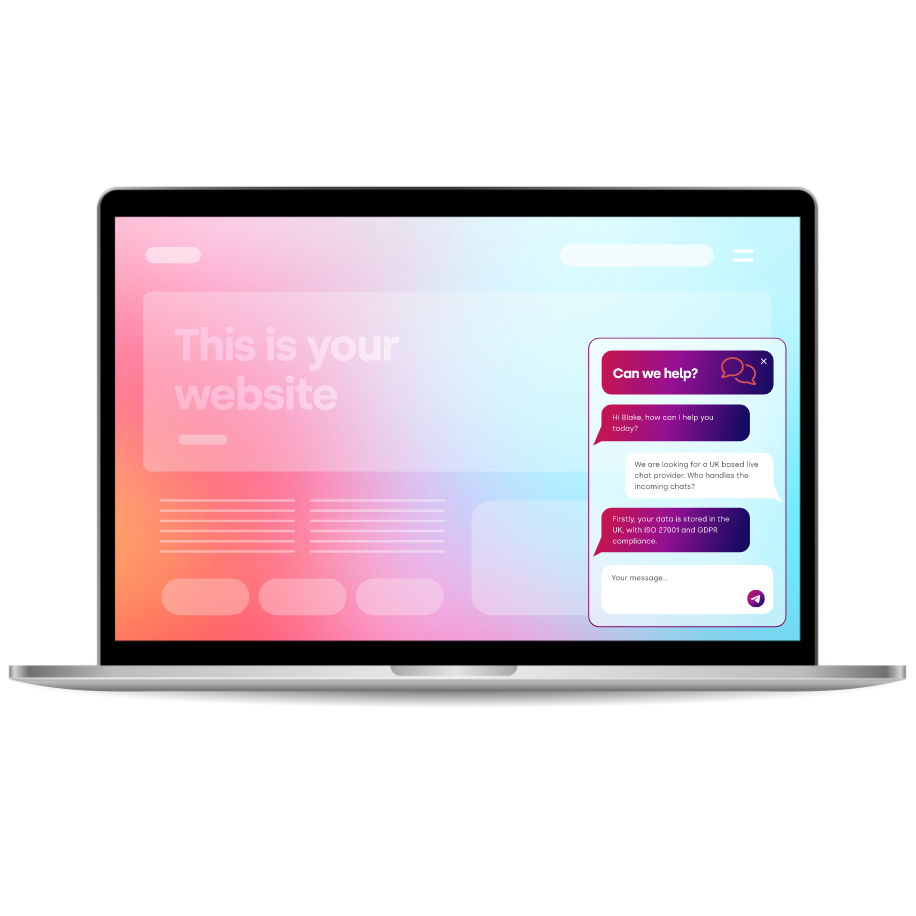
Thousands Trust Us. Will You?
From live chat to AI-powered chatbots and social integrations, Click4Assistance powers real-time engagement - fully UK hosted and trusted across industries.
